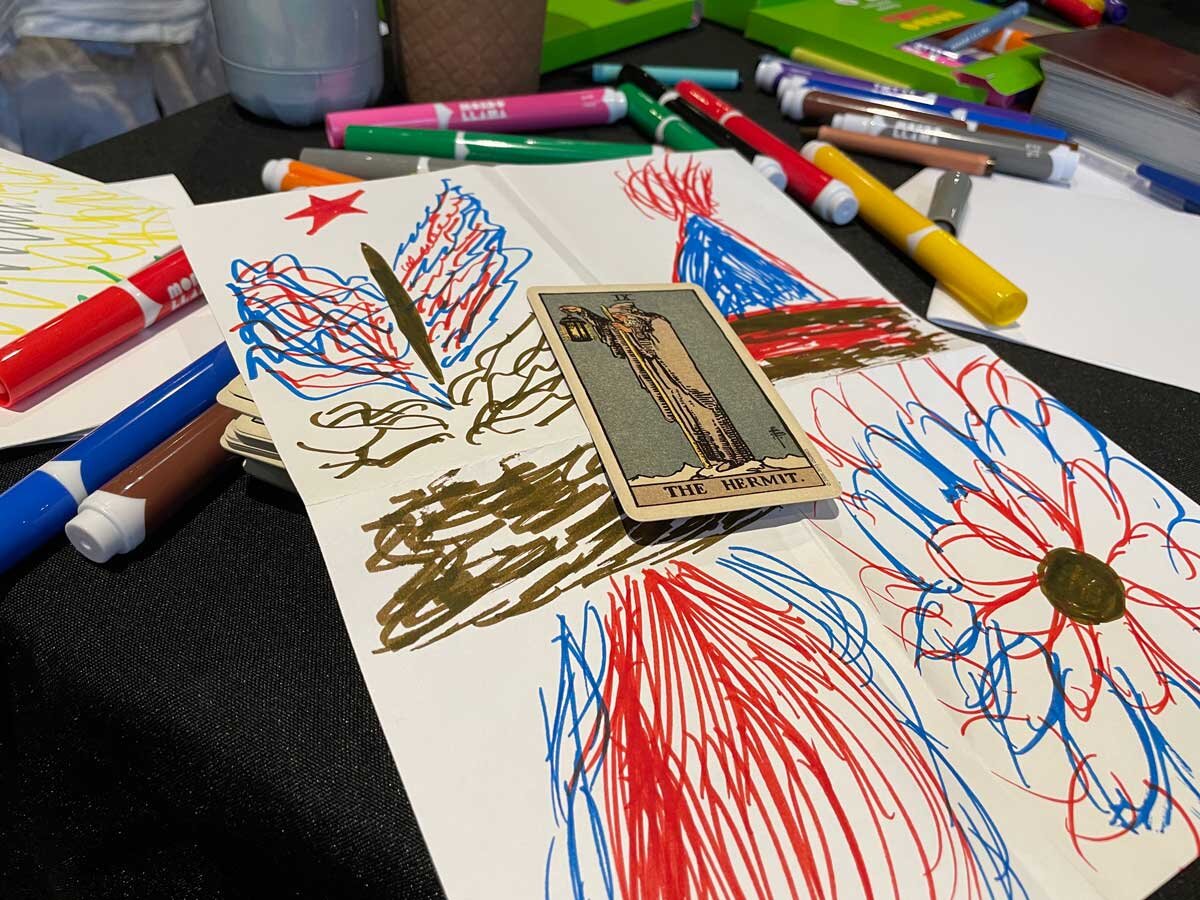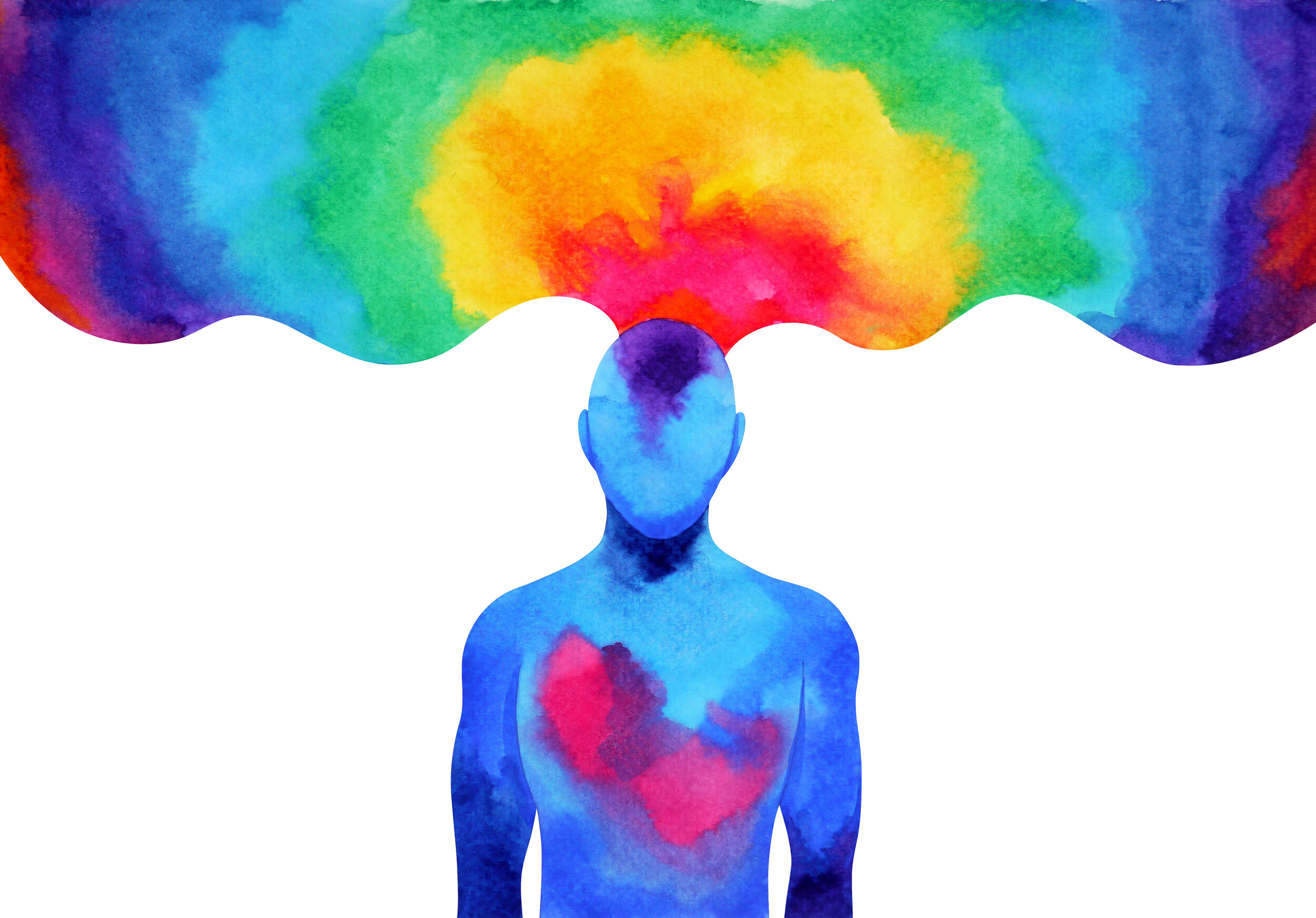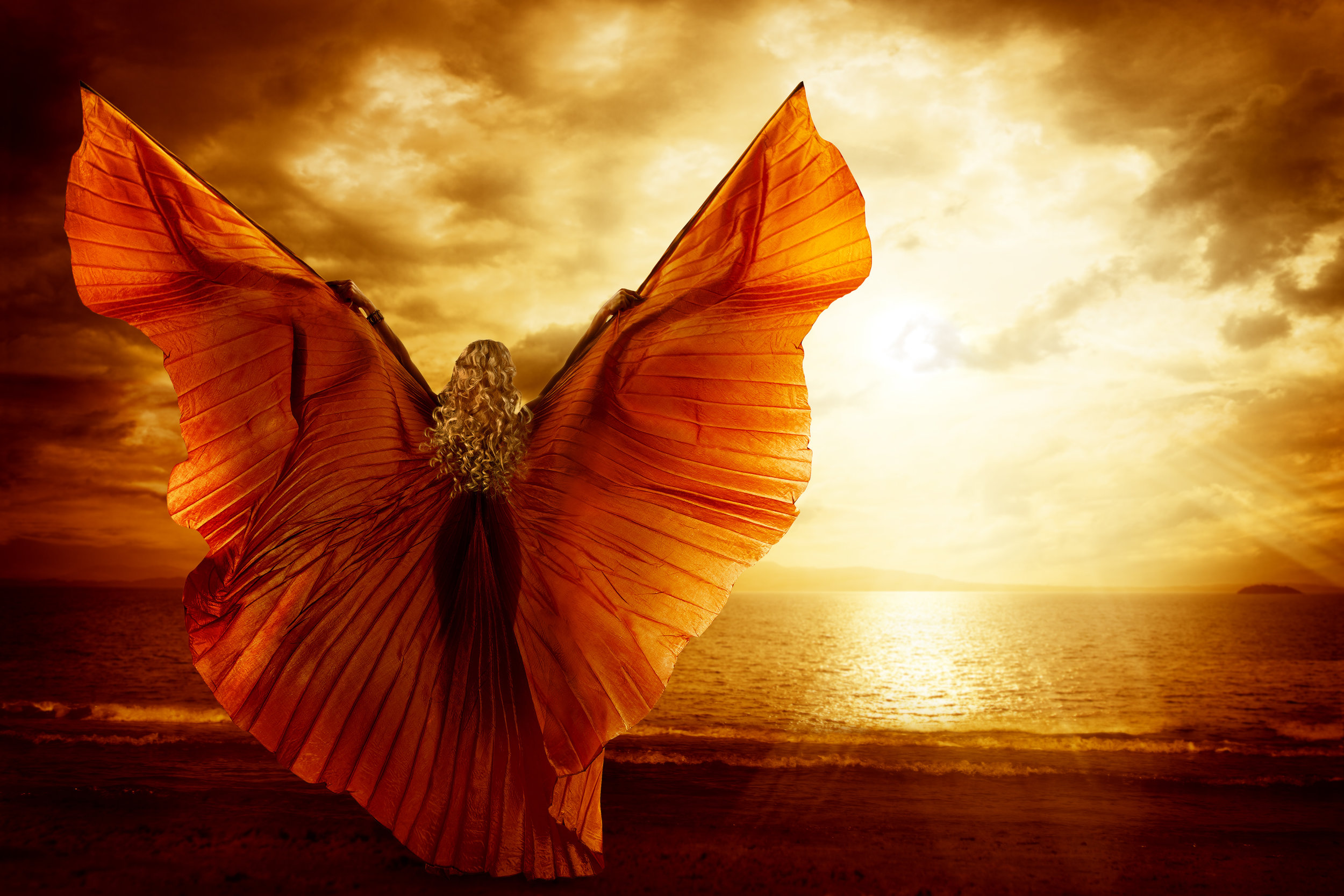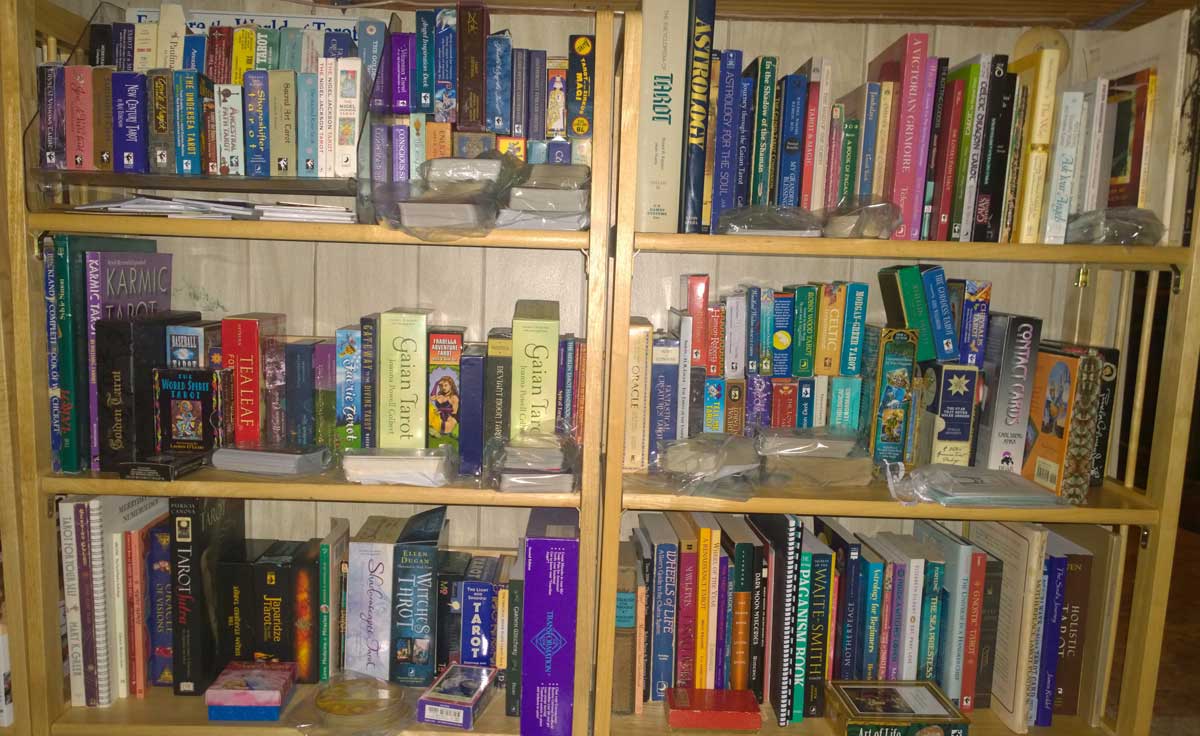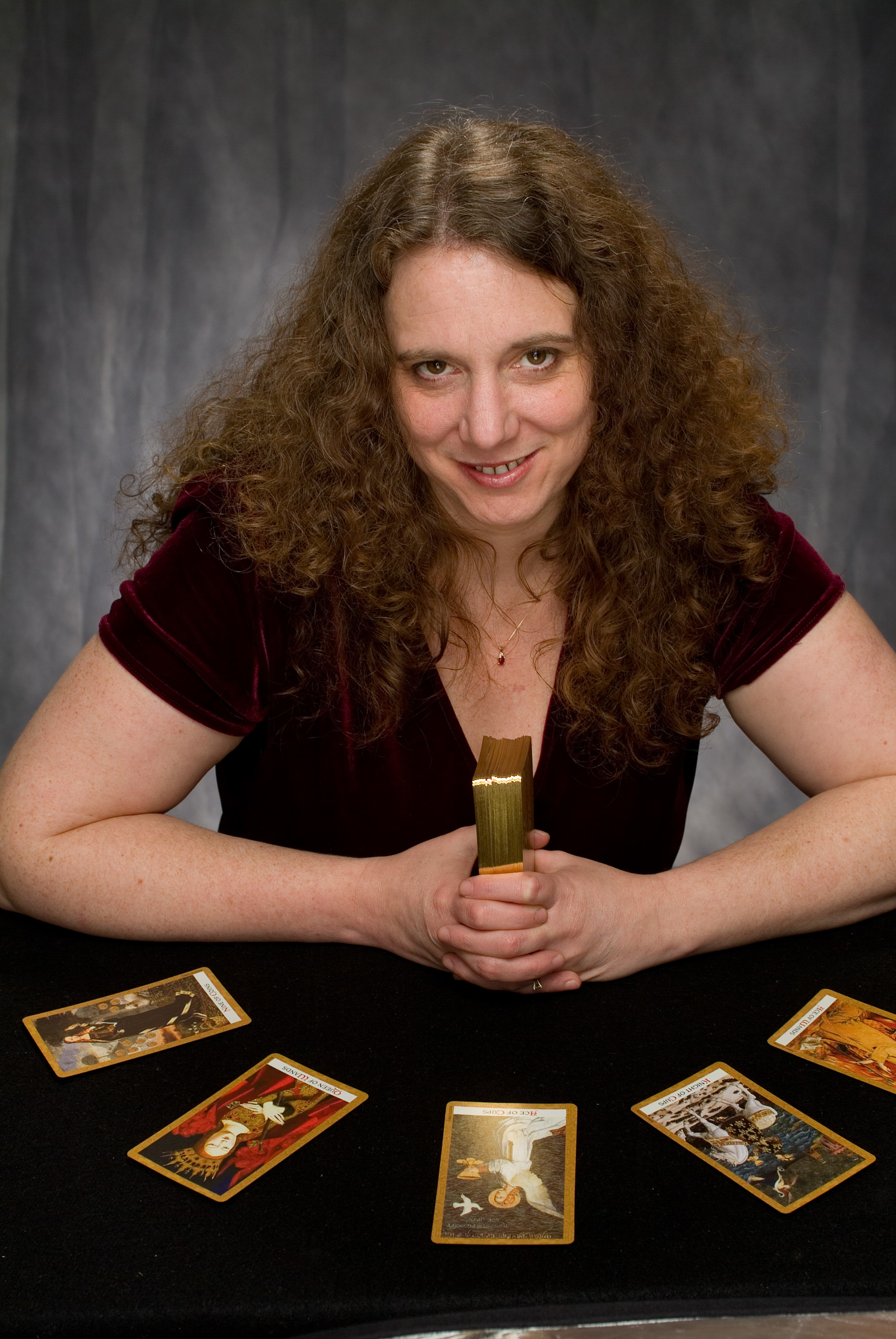
Welcome to my personal blog.
Here you will find my musings, thoughts and observations, all inspired by my experiences as a full-time professional tarot reader.
Four Things I Learned at the Masters of the Tarot Conference at Omega Institute
Each presenter at the Masters of the Tarot Conference taught me something important.
I was a presenter at The Masters of the Tarot Conference at Omega Institute this summer. It was opening weekend at Omega, after a year-and-a-half pandemic closure.
Mary K. Greer and Rachel Pollack have led this annual conference for many years. For me, it had been a goal to attend, and a dream to present, for just as long.
One of the perks of presenting at a conference is the ability to attend the classes of your fellow presenters. I could write volumes about everything I experienced and learned over that three-day weekend. For this post I thought it would be fun to share just a single tidbit from each presentation; some inspiration that I will take forward in my own life and tarot practice.
Friday night we gathered for an interactive session with Mary K. Greer. This was an icebreaker which quickly taught deep tarot skills. One thing I learned from this session is the power inherent in simply describing a tarot image.
I am not typically an image-based reader. Some decks read better for me than others, but I do not overthink the art. I often joke that I could easily read with seventy-eight pieces of notebook paper. When Mary had us describing images rather than reading cards as I normally would, I was immediately out of my tarot comfort zone.
As it turned out, I spent much of the weekend pushing the boundaries of my comfort zone. This is why our gatherings and conferences, both in person and online, are so valuable. We never know everything there is to know about tarot, or about ourselves. We must always keep pushing and challenging ourselves to grow.
What I learned about describing a tarot image is this. There is a magic that happens in the connection we make with the image, the words we choose to describe the image, and the spiritual forces that are always available when tarot is present. Of course, I knew this, because I have seen new tarot students look at a card and find wisdom within it time and again. Yet, being forced to verbally describe the image without benefit of classic interpretations and symbolism was surprisingly personal, powerful and insightful.
The next session was Saturday morning. I was excited to present “How Tarot Helps Us Heal”. I will leave it to those who attended to share what they learned; I hope they learned a lot!
That afternoon was Madame Pamita’s turn to present.
Madame Pamita taught a hands-on approach to tarot magick that was as fun as it was enlightening. I learned quite a bit in this class, even though I use and teach tarot magick regularly.
One thing I learned from Madame Pamita that will be helpful as I continue to teach tarot magick is a simple way of talking about tarot magick versus divination. The problem I have encountered is this. When we do divination exercises in class it is common to say, “pick a card,” or “pick two cards to tell you…”. When we do tarot magick exercises we are not picking at random. We look at the cards and cognitively choose cards to serve us in the magickal work we are doing. It has sometimes been very hard for me to communicate this difference effectively. Sometimes, when I ask students to choose a card cognitively, rather than at random, they are confused and do not know what to do.
Madame Pamita shared simple nomenclature for which I am grateful and very excited to adopt. We choose cards either face up or face down. When we choose cards face down, we are choosing at random, and divining. When we choose cards face up, we are selecting the cards whose energy we wish to employ in magick. What could be simpler, or more brilliant?
Saturday evening was Rachel Pollack’s session. I was excited that Rachel asked all the presenters to sit on a panel and discuss issues that we face as professional tarot readers. At the end, Rachel chose a member of the audience for whom to perform a sample reading.
Rachel, like Mary, is a seemingly limitless supply of tarot knowledge. It is thrilling that Mary K. Geer was a headlining presenter at StaarCon 2021, and that Rachel Pollack will be headlining for StaarCon 2022.
One thing that Rachel said during our panel discussion has stuck with me and has caused me to shift the way I speak and think in a very specific way. Rachel was talking about the different sorts of readings we do, and the language readers use to describe their readings. Rachel took exception to readers who say they use tarot to ‘empower people’. This is something we often hear. Never had I heard it the way Rachel hears it.
Rachel said that if we ‘empower someone,’ we have really disempowered them. No one person can empower another. Personal empowerment can only come from within. If we, as readers, try to empower someone, we see ourselves as the keepers of power. That is not empowerment.
Going forward, I will consider that I might use tarot to help people discover their power, utilize their power, or know their power.
I approached our Sunday morning session with Shaheen Miro with that sad end-of-summer-camp feeling. I had no desire for the conference to end, nor to leave Omega.
Shaheen’s workshop provided the biggest challenge of the conference for me. This is because Shaheen’s presentation had us working with art and intuition.
While I am a very creative person, I am not an artist. In fact, I am the one member of my family of origin who cannot draw and paint. This was a source of shame for me as I was growing up. Worse, I was always the one who would spill the paint and make a mess.
I was tempted to shrug off Shaheen’s presentation and enjoy a few hours strolling the lovely Omega campus. It would be easy for me to say that what Shaheen was serving simply wasn’t on my diet.
Yet, over the weekend I had developed a fondness and admiration for Shaheen that would not let me take the cowardly way out.
In that workshop, I did not learn that I have a hidden talent for drawing. I did learn that nothing bad would happen if I experimented with markers and crayons. I learned that I could express my intuitive thoughts through color and shape. For me, that was huge.
We are fortunate to have a tarot and divination community which offers so many opportunities, online and in person, for fellowship and learning. Each conference has its own unique personality. The Masters of the Tarot offered a deep connection to community and tarot, as well as an opportunity for growth and healing. I am delighted to have been a part of it.
It Is Okay to Feel What You Feel
Toxic positivity keeps us stuck. Tarot helps us understand our feelings and heal.
Have you ever felt shame for your feelings?
Something I often hear at the tarot table is this. “I know I shouldn’t feel that way, but I do”.
Sometimes the cards indicate feelings that clients are uncomfortable acknowledging.
They might be experiencing something that we see as ‘low vibrational’ or even unhealthy, like jealousy, fear, or rage.
Recently I have noticed a trend toward shaming people for their feelings. There is a term for this; ‘toxic positivity’.
Toxic positivity has always been around. I remember in my days of following the Grateful Dead from city to city many of my fellow Deadheads feared and avoided ‘bad vibes’. When I was raising my kids, I knew other parents who demanded happiness from their children, no matter what their children were actually experiencing.
The increased popularity of the Law of Attraction has led to a great deal of misunderstanding.
It’s true that our thoughts and words have power. It’s true that if we constantly say and think negative things, we are more likely to manifest negative things, or to be unable to manifest the things we desire.
The reverse is true, too. The more that we can visualize what we want, and recognize our ability to have what we want, the more likely we are to manifest it.
All of this is true, but it sometimes leads to a faulty leap of logic. People come to believe that it is wrong, unlucky, or destructive to feel sadness, grief, anger, or any other type of upset.
The problem with that is that we, as humans, are designed to experience a range of emotions. When we acknowledge uncomfortable feelings, we take the first step toward healing and transformation.
If we feel shame around acknowledging what we are feeling in the moment, we have no opportunity to heal.
It is incredibly hurtful to stay stuck in grief, sadness, fear, or anger. It is completely normal and healthy to feel those things from time to time.
Tarot has an amazing knack for showing us our feelings, especially the feelings we don’t want to acknowledge. Even better, tarot can help us find ways to hold space for our grief, and then, eventually, change our narrative and move on.
When we do this, we end up stronger and better than we were before.
If the only feelings we want to acknowledge and experience in life are ‘positive vibes’, we will end up shallow and filled with denial.
Hurt is always an opportunity for healing. Taking time and holding space for hurt and grief will not manifest more hurt and grief. In fact, the opposite is true.
Those who call themselves spiritual leaders and teachers yet cannot handle their own feelings, or the feelings of their clients, often do more harm than good. Those who shame others for harboring negativity, living in fear, or hanging on to anger are often guilty of doing the same.
We are spiritual beings having a human experience. To do that well, we must allow ourselves to be fully human.
To approach the goal of being fully healed humans, we must use our uncomfortable feelings as the impetus for personal healing and transformation. Acknowledgement and acceptance of those feelings is always the first step. Tarot can be a tool that helps us do that.
You Have Seen Your Golden Wings
Rumi, my musical oracle and a tarot exercise.
You Have Seen Your Golden Wings
I like to think of myself as something of an intellectual, especially when it comes to literature. Yet, the hard truth is I prefer song lyrics to poetry, fantasy art to fine art, and cheesy crime novels to good lit. There, I said it. Sometimes we fall short of our perfect vision of ourselves.
Another way I fall short of that vision is that I strongly prefer listening to music I know versus music I don’t know. I’ve berated myself for this often. I had to hear each of my favorite songs a first time, right?
Today I am proud to announce that I have a new favorite song. I heard it for the first time Saturday night, live in concert. I downloaded in on Apple Music the next day. Now it’s a brainworm that likely won’t drive me nuts for a long time.
The song, Golden Wings, is by John Kadlecik, on the John Kadlecik Band’s new album, On the Road. He played it early in the first set of their jammin’, bangin’, most awesome show at Terra Fermata in my new hometown of Stuart, Florida, on February 9, 2019. As he announced it, he mentioned that the lyrics included a quote from Rumi.
I know who Rumi was, of course. There is even an out-of-print Rumi Tarot by the great Nigel Jackson. Yet, I had never read Rumi, for exactly the same reason I don’t like to listen to new songs. I’d rather read the poets l love, like T.S. Eliot and e e cummings, then venture into new territory.
As I waited for JKB to start their first set Saturday night, I was hoping they would play a lot of music I knew and loved, and not as much of their original stuff. Yet, Golden Wings caught me quickly. By the time they played another new-to-me original, Seen Love, I was totally hungry for new music.
Being open to new things seems to be something I need to nurture in my life right now.
As a diviner, I get a lot of messages from the Universe through song lyrics. Now, that lovely piece of poetry from Rumi, delivered to me by my favorite second generation Grateful Dead inspired musician, is my oracle for the moment. I looked up the poem and read it in its entirety. There is a lot to contemplate there. Within it, I can find confirmation of the need to embrace what is new. Yet, there’s more.
The Rumi quote shows up in the chorus of the song.
“Oh soul,
you worry too much.
You have seen your own strength.
You have seen your own beauty.
You have seen your golden wings.
Of anything less,
why do you worry?
You are in truth
the soul, of the soul, of the soul.”
What are these golden wings of which Rumi wrote and John sings? What are my golden wings?
This is the question my musical oracle asks me to contemplate today. In that contemplation, I pulled a single tarot card. Major Arcana 20, Judgment, appeared to me. That, in many decks, this image includes an angel with wings is a nice visual synchronicity.
What is interesting that that strength and beauty are things that we literally do possess, and literally can see in ourselves and others. I don’t know anyone who literally has wings, golden or otherwise, growing out of their backs.
The message of Judgment for me, beyond closure and assessment, is one of acknowledging one’s victories, and of hearing one’s calling. When I think of the jump from acknowledging my strength and beauty to acknowledging some etheric spiritual quality in myself for which ‘golden wings’ would be a descriptor, Major Arcana 20 makes perfect sense.
Perhaps you would like to join me in this divination exercise. Pull a card for yourself and ask the Universe to show you your own golden wings.
Dealing with Our Decks: Different Ideas in a New Era of Tarot
Some musing on tarot trends, and the different ways we try to understand the mysteries of tarot.
There’s a general belief amongst tarotists and trend-spotters alike that tarot is enjoying a boost in popularity. Whenever I see headlines like “Tarot is Back!” I always cringe because, in my world, tarot has never been gone.
I think we can thank the internet and social media for the proliferation of tarot interest, tarot information and tarot decks. There is a concern among many tarotists that so many tarot decks are being created, so many tarot books are being written, that the quality works, and the traditional works, will be diluted by a flood of mediocrity and misunderstanding.
One need only to look at the wide variances in card depictions, teaching methods and card interpretations to know that the more minds in the mix, the more difficult it will be to hold on to traditional foundational tarot understanding.
We can see how much tarot understanding has expanded since A.E. Waite and Pamela Colman Smith produced the deck that practically defined tarot for a century prior to social media. Might A.E. Waite, if he were here today, see our common tarot practices as a gross misunderstanding of his work?
In the early 1970s Eden Gray suggested that tarot was exoteric; a tool we could all use at our kitchen tables, rather than an esoteric device reserved only for the very gifted and studied few. With this open-minded approach and social media, we can only imagine how much tarot wisdom we might develop in the next decade, and how much we might add to the body of knowledge that is tarot going forward. As long as the foundation doesn’t get lost along the way, I have to think this is a good thing.
I believe there will always be those among us who keep the traditions sacred, even as tarot may at times become trendy and pop, and perhaps at other times swing back into the shadows, as trends often do.
Social media allows us to discuss in large groups our thoughts and feelings about the cards, and to share our techniques. As we discuss and share, it becomes clear that we all have different feelings and beliefs about the way the cards work, how the cards speak, who speaks through the cards and what our connection to the cards might be.
One new tarot technique that piqued my curiosity recently is the idea of a “tarot deck interview”. That is, asking a new tarot deck questions to ascertain how you might best use the deck, and what your relationship with the deck might be.
My first reaction to this concept teetered between ridicule and simple lack of resonance. I don’t tend to personify the cards overly much, and, unlike many readers, I don’t notice a palpable difference in the voice and personality of specific decks. For me, tarot is tarot.
This was true until a student shared her deck interview in an online thread about the topic. There was something that felt so poignant and true about the reading that I immediately questioned my initial reaction to doubt the process.
When I first learned tarot, there were some distinct tarot traditions; Waite, Crowley, Feminist/Pagan, De Marseille. These traditions still exist, and still inform the vast majority of tarot knowledge and practice. Now, though, there are tarot decks, and tarot-like decks, that are remarkably different from any of these traditions.
Modern decks like Chrysalis, Mary-el and Wild Unknown are very popular, and stray significantly from any tarot traditions of yesteryear, although one can see influences from those traditions in certain cards and decks here and there.
The vast number of available decks has led to some serious collecting (in some cases, hoarding). While there are still folks who read with, and own, only one deck, many of us choose not to be deck-monogamous.
Right after my online conversation about interviewing tarot decks, another online friend reached out looking for advice on what to do with, or how to use, their huge tarot collection. The truth is, while most of us have tarot shelves filled with decks, most of us confine our tarot use to only a few trusted decks. The majority of the decks in our collections sit and collect dust.
We all experience decks that “read well” or “speak clearly” for us, and decks that don’t. Often, this has nothing to do with how much we like the artwork. And this is another substantive question for each reader to ponder. What is it that causes a deck to feel readable?
One of my problems with the idea of a tarot deck interview is that I know in my own experience the majority of decks I have will sit on the shelf and not get much use. If I interview such a deck at the beginning of our relationship, will the cards really make this prediction, and will I have the wherewithal to interpret the cards in such a way after having just bought them and hotly anticipated their arrival?
On the other hand, my friend who wonders what to do with her shelf of inactive decks might have a field day breaking out each one and asking, “How can you serve me?” or “How should I use you?”
When I was learning tarot thirty years ago there were not so many decks from which to choose. Then, perhaps the majority of available decks had similar symbolism. The greater variety now available makes the idea of conducting deck interviews seem more reasonable and helpful than in might have seemed a quarter century ago.
The idea that each deck has a specific personality and might be most useful for some specific tasks more than others seems very different from the concept of “Comparative Tarot” as developed by Valerie Sim and practiced by many readers of my generation.
While Comparative Tarot does acknowledge the common wisdom that different decks can have different voices, Comparative Tarot asks us to look at different depictions of the same card and let that process of compare-and-contrast inform our understanding of the card any time we see it, no matter the particular deck.
I had developed this concept even before I heard of Valerie Sim’s work. I’ve always called it “The Deck in My Head”. Whatever deck I happen to be working with, I will often call to mind other depictions of the cards that appear on the table. This helps me give a clear and comprehensive reading with any deck; I joke I could do it with seventy-eight pieces of notebook paper.
Coming from this perspective, from the idea that all images of the card inform of our understanding of what the card can mean, seems almost diametrically opposed to the idea that each deck operates in its own way, has its own agenda and its own best practices. I will have to let some of these ideas gel to see if there is a way these two ideas can work together for me.
I do occasionally discover a deck that I will use for a specific purpose, although I have never determined this by asking the deck itself. Most notable is my Tarot of Transformation, which is way too hairy-fairy for me to give a strong comprehensive reading. I call it “The Big Guns” and will bring it out when I get stumped in a professional reading. I will never use more than three cards from this deck in a sitting because each is so intense in its message. Never has this deck failed to settle a problem or solve a mystery when I use it this way.
The question is, would interviewing decks lead me to finding other sorts of big guns for my arsenal? Might it stimulate my creativity and help me find new uses for my beloved-but-unused decks?
One problem I see associated with the mindset around interviewing decks is the idea that there should be decks that we use for specific type of readings. I’ve played with this idea too, using The Lover’s Path Tarot for romance readings and Ghosts and Spirit Tarot for mediumship readings, for example.
Overall, I really resist this concept, and think it could lead to really limited readings, for this reason. No question exists in a vacuum, and no part of life is independent from the rest of life. For example, my question may be about love, but the impediment to my love life may be my career.
I think, for professional readings and general divination, I personally need my primary tarot deck to be a full-service one-stop-shop kind of a deck. I want all the information, and all the factors.
After some consideration, I think the process of interviewing tarot decks can help us expand the way we use tarot, but could also limit us in our readings, depending on the way we choose to use the process.
Maybe most importantly, I think one of the reasons it’s great that there are so many tarot decks available is that they can teach us about each other, not only about themselves. I don’t want to see the Comparative Tarot process get lost in a sea of decks that are so dissimilar one from another as to not withstand any comparison.
The other quandary the concept of interviewing tarot deck presents for me is the personification of tarot. Can seventy-eight pieces of cardboard think and feel? I think each of us does anthropomorphize tarot to some extent. For me, though, the power of the cards in not in the cards, but in where the cards lead my thoughts, feelings and intuition, and what the cards teach me. I feel I work with the power of the symbols themselves, not the paper on which they are printed.
I will be pondering and musing about this for a long time. Tarot culture is always growing and changing, as are we. This is one of the reasons I love tarot, and love being part of the community of tarotists who ponder with me.
If you want to read the deck interview that got me thinking, I am sharing it here, with the permission of the author, Maureen, from the Tarot Nerds Facebook Group.
Green Witch Tarot Deck Interview:
1. What can you teach me? - The Holly King (Hermit)
I will be your mentor and guide to seek your truth and journey with you on your chosen path. I am experience and knowledge.
2. Describe yourself to me- 10 Chalices (Cups)
I am happiness abundance and joy, everything you strive to achieve. I am a good deck.
Describe me-7 Athames (Swords)
You are a strategic thinker with determination and fortitude. You are diplomatic and very perceptive. You overcome challenges, are self-reliant, confident and brave.
4. How can we work together- Ace Pentacles
I will teach you the magic art of manifestation. We will do well together, I am grounded and earthbound and bring you good fortune.
5. What are your strengths: Queen of Swords-I am shrewd, orderly independent and self-reliant. Honest and sharp of tongue when necessary much like you.
6. What are your weaknesses? Page Cups
I need to be more creative and trust my inner child. I must be less pragmatic and analytical and more watery. I am a good friend but my loyalty is not honored by everyone.
7. What is our potential together-Knight Swords.
Our relationship will adventurous, but we must be thorough and avoid impatience. We must not rush this process and miss any steps.
8. Do you want to work together? -The Star
The opportunity is presented to you but you must decide. The energies are in favor of our union. I bring you the tools to manifest all you desire. Trust your intuition.
